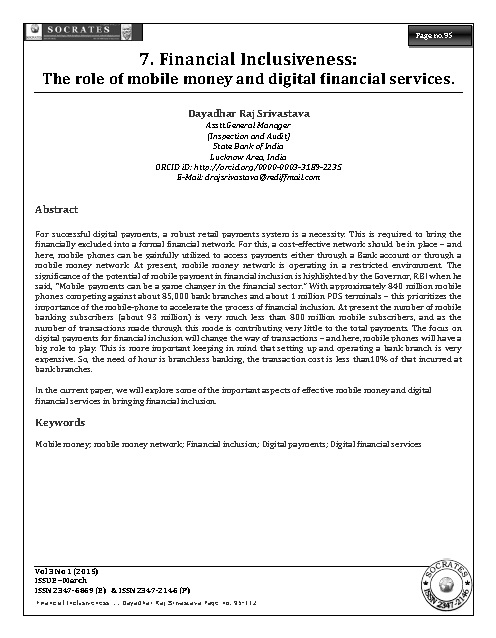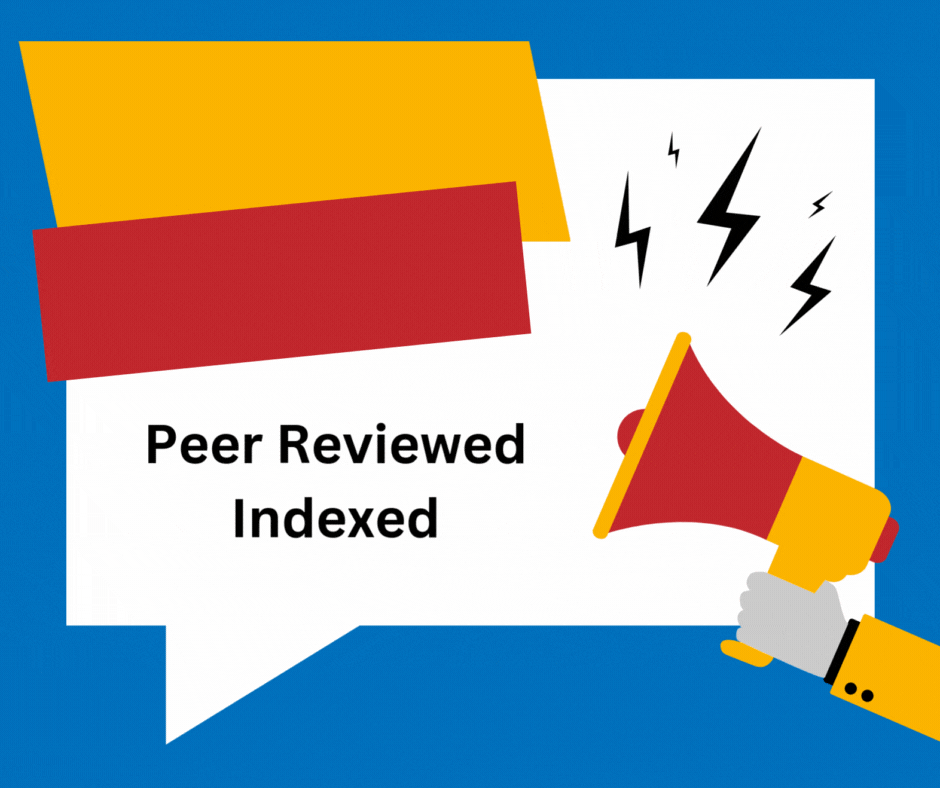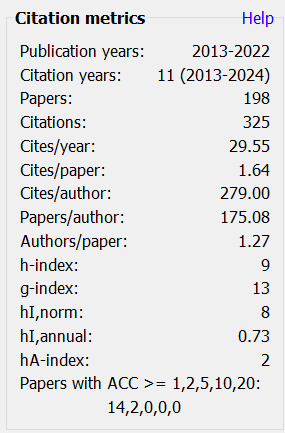Financial Inclusiveness
The role of mobile money and digital financial services
Keywords:
Mobile money, mobile money network, Financial inclusion, Digital payments, Digital financial servicesAbstract
For successful digital payments, a robust retail payments system is a necessity. This is required to bring the financially excluded into a formal financial network. For this, a cost-effective network should be in place – and here, mobile phones can be gainfully utilized to access payments either through a Bank account or through a mobile money network. At present, mobile money network is operating in a restricted environment. The significance of the potential of mobile payment in financial inclusion is highlighted by the Governor, RBI when he said, “Mobile payments can be a game changer in the financial sector.” With approximately 840 million mobile phones competing against about 85,000 bank branches and about 1 million POS terminals – this prioritizes the importance of the mobile-phone to accelerate the process of financial inclusion. At present the number of mobile banking subscribers (about 93 million) is very much less than 800 million mobile subscribers, and as the number of transactions made through this mode is contributing very little to the total payments. The focus on digital payments for financial inclusion will change the way of transactions – and here, mobile phones will have a big role to play. This is more important keeping in mind that setting up and operating a bank branch is very expensive. So, the need of hour is branchless banking, the transaction cost is less than10% of that incurred at bank branches.
In the current paper, we will explore some of the important aspects of effective mobile money and digital financial services in bringing financial inclusion.
Downloads
Metrics
References
Asli demirguc-kunt and leora klapper, 2012, “measuring financial inclusion: the global findex database”, world bank policy research paper 6025.
Beyondbranches, http://www.beyondbranches.com
Cgap, http://www.cgap.org/blog/china-?-future-leaderbranchless-banking-poor)
Cgap’s “the emerging global landscape of mobile micro-insurance”, 2014
Finscope, tanzania, 2013 report summary. Finscope trust and financial sector deepening trust, tanzania), retrieved from
http://www.fsdt.or.tz/finscope/sites/default/files/pdfs/finscope-brochure-2013.pdf
Gsma’s “state of the industry 2013: mobile money for the unbanked”, 2014.
Isaac mbiti, david n. Weil, june 2011, mobile banking: the impact of mpesa in kenya, working paper 17129
http://www.nber.org/papers/w17129, retrieved from http://www.econ.brown.edu/faculty/david_weil/mbitiweilnberworkingpaper17129.pdf
Mobile payments go viral: mpesa in kenya ignacio mas and dan radcliffe, bill & melinda gates foundation march 2010 retrieved from
http://wwwwds.Worldbank.org/external/default/wdscontentserver/wdsp/ib/2010/05/03/000334955_20100503043912/rendered/index/543380wp0m1pes1box0349405b01public1.txt
Penicaud.c. And katakan.a. State of the industry 2013: mobile financial services for the unbanked,.gsma mmu 2014
The digital finance plus initiative, http://www.cgap.org/topics/digitalfinance-plus
Wdi 2010 | data retrieved from http://data.worldbank.org/datacatalog/world-development-indicators/wdi-2010

Downloads
Published
How to Cite
Issue
Section
License
Revised Copyright/CC license that applies to all the articles published after 05-02-2017
Attribution-NonCommercial 4.0 International (CC BY-NC 4.0)

Copyright/CC license that applies to all the articles published before 05-02-2017
Attribution-Non Commercial-No Derivatives 4.0 International (CC BY-NC-ND 4.0)

Author(s) will retain all the right except commercial and re-publishing rights. In the case of re-publishing, they will have to obtain written permission from the journal. Additional licensing agreements (Creative Commons licenses) grants rights to readers to copy, distribute, display and perform the work as long as you give the original author(s) credit, they can not use the works for commercial purposes and are not allowed to alter, transform, or build upon the work. For any reuse or distribution, readers and users must make clear to others the license terms of this work. Any of these conditions can be waived if you get permission from the copyright holders. Nothing in this license impairs or restricts the authors’ rights. To view a copy of this license, visit http://creativecommons.org/licenses/by-nc-nd/4.0/ or send a letter to Creative Commons, 171 Second Street, Suite 300, San Francisco, California, 94105, USA.
Research Papers published in SOCRATES are licensed under an Attribution-NonCommercial-NoDerivatives 4.0 International (CC BY-NC-ND 4.0)












